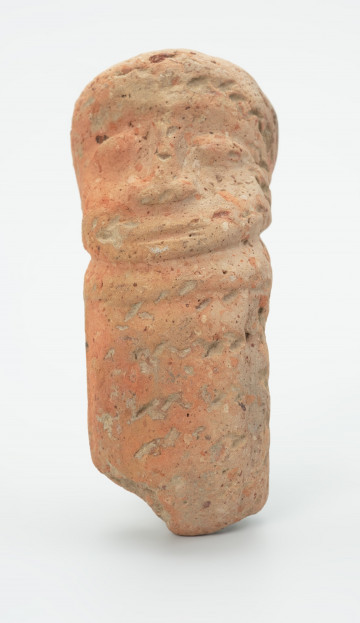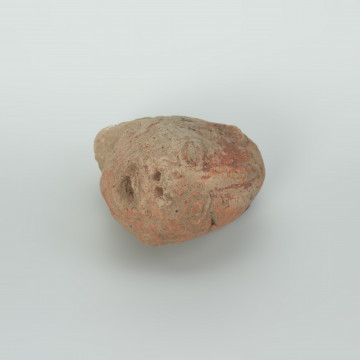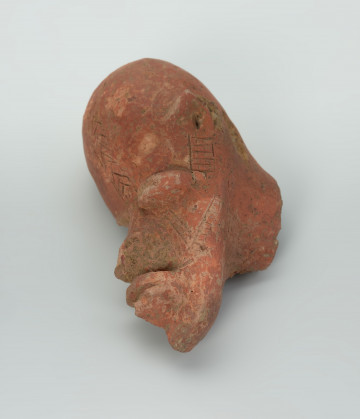
Figure
około 1480
National Museum in Szczecin
Part of the collection: Terracotta from the Niger
The sculpture on display depicts an upward-slanting head with a square face resting on a massive neck. It probably depicts a man. The ancient city of Djenne-Jeno (also called old Djenne or Djenne, Djenne-Djenno, Jenne-Jeno, or old Jeno) located in modern Mali on the Macina plain was one of the first early urban centres of sub-Saharan Africa. It was founded in the 3rd century BC and abandoned in the 14th century. Many outstanding specialists in iron and clay processing developed there. The most interesting discoveries from this region include terracotta sculptures, which usually depict people. They are usually men who have upward-sloping heads, square chins and strongly defined eyelid lines. Their bodies and faces are often covered with geometric patterns and ornamentation in the form of necklaces and bracelets worn on their ankles and wrists. Many researchers suggest that the terracotta figures from Djenne-Jeno may have commemorated dead ancestors. The figures carved in kneeling or sitting poses, poor in jewellery, probably represent ordinary people. In contrast, the richly decorated figures and sculptures of horse riders wearing short skirts, headdresses and equipped with weapons are probably representations of figures endowed with worship, glory or dignity, e.g. chiefs or great warriors. In 1988, Djenne-Jeno (and the historic centre of neighbouring Djenne, founded in the Middle Ages) was declared a UNESCO World Heritage Site.
Katarzyna Findlik-Gawron
Author / creator
Dimensions
cały obiekt: height: 6,35 cm, width: 4,3 cm
Object type
sculpture
Creation time / dating
Creation / finding place
Identification number
Location / status

około 1480
National Museum in Szczecin

około 1201 — 1985
National Museum in Szczecin

około 1201 — 1985
National Museum in Szczecin
DISCOVER this TOPIC
Castle Museum in Łańcut
DISCOVER this PATH
Educational path